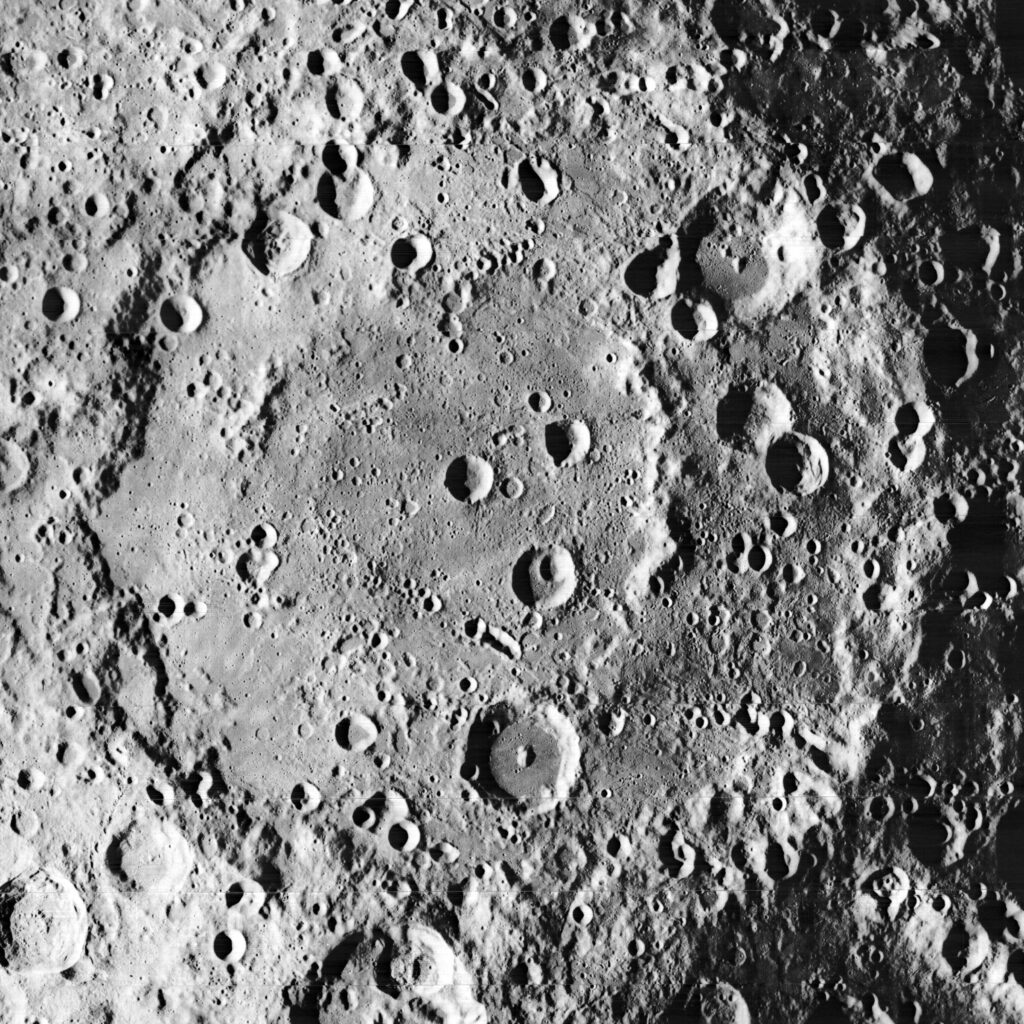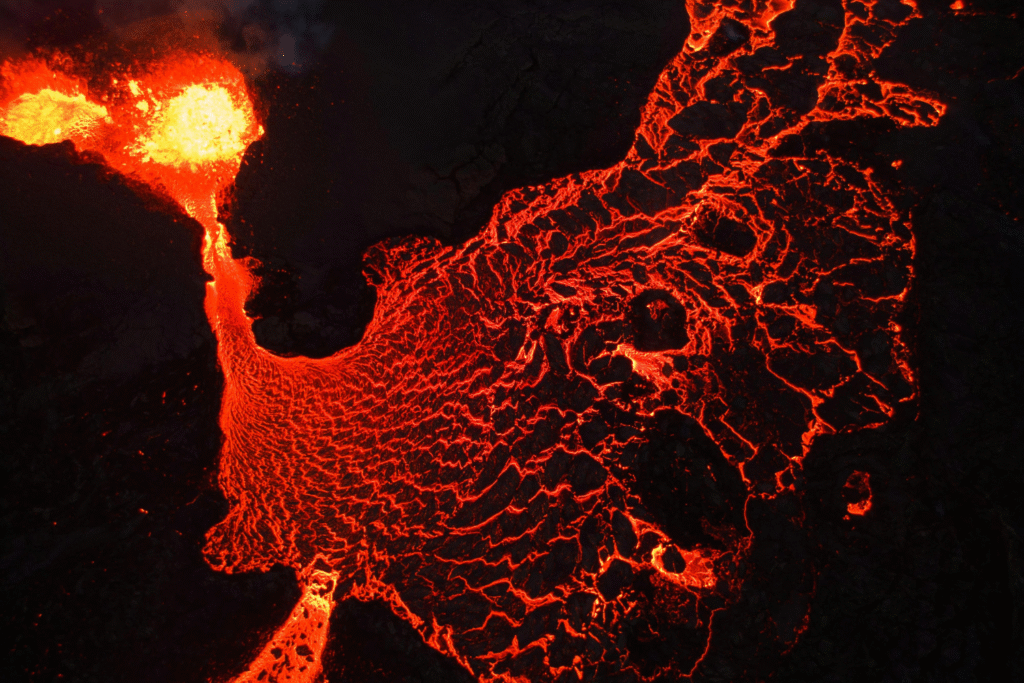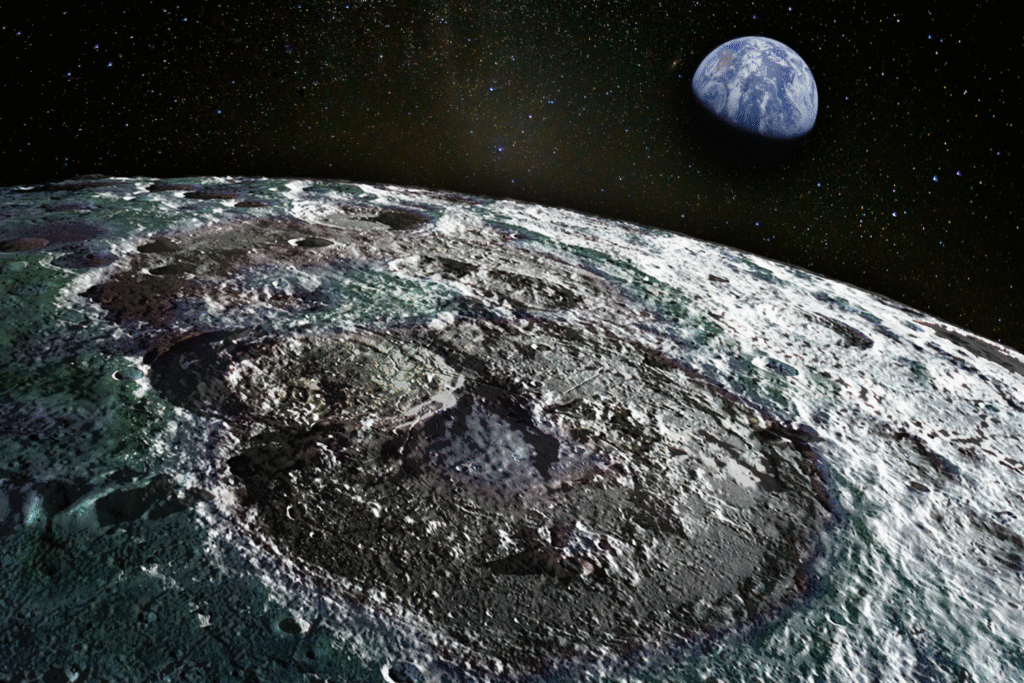New research reveals hidden lunar structure.

Recent investigations into the Moon’s interior are giving scientists a clearer understanding than ever before. Earlier models only scratched the surface, but new seismic analysis, precise gravity mapping and improved rotational measurements now allow researchers to look deeper into its structure. What they found is a surprisingly active early history full of heat and movement that shaped the Moon from the inside out. These discoveries show that the Moon evolved in complex stages, leaving behind clues in its core, mantle and crust. Together these layers tell a long story of cooling, chemical change and internal reshaping.
1. Scientists identify a dense solid lunar inner core.

The Moon’s inner core is now understood to be a solid metallic sphere formed during its earliest cooling period. Scientists used seismic reconstructions and tiny variations in the Moon’s wobble to estimate its radius at about two hundred and fifty kilometers. This measurement was confirmed in a recent analysis according to Nature. Knowing the core is solid helps researchers explain why old lunar rocks still hold faint magnetic traces, because such a core would have supported magnetic activity when the Moon was hotter and more active.
These magnetic traces also help scientists estimate when the Moon’s interior cooled enough to shut down that activity. With a solid core established, researchers can refine models of how heat moved upward, how the Moon shifted chemically over time and how its early molten interior gradually solidified. This foundation creates a clearer timeline for the Moon’s long term evolution and helps link deeper interior changes to the surface features visible today. Understanding the core is essential for mapping how the Moon transformed across billions of years.
2. A flowing outer core surrounds the solid inner sphere.

Around the solid core lies a wide layer of molten metal that slowly circulates and transfers heat toward the mantle. Scientists detected this fluid zone by examining how seismic waves behave inside the Moon and how the interior responds to tidal forces from Earth. This molten layer was described in updated thermal modeling reported by ScienceAlert. The presence of flowing metal suggests that the Moon once had stronger internal motion, which would have powered its early magnetic field during a much warmer phase of its life.
This region plays a key role in explaining why the Moon’s magnetic field eventually faded. As the interior cooled, motion in the molten layer slowed, reducing the energy needed to maintain a magnetic field. Understanding this layer also helps researchers compare the Moon’s internal structure to Earth’s, since both bodies have a solid core surrounded by fluid metal. This connection highlights the similar processes that shaped them, even though the Moon cooled much faster due to its smaller size. These insights guide scientists toward the behavioral differences found higher in the mantle.
3. The mantle behaves differently between lunar hemispheres.

The mantle inside the Moon is not the same on every side. The near side, which faces Earth, contains more heat producing elements and stays warmer, while the far side remains cooler and stiffer. Scientists mapped these differences using detailed gravity measurements from NASA’s GRAIL mission. The warmer and more flexible behavior of the near side was confirmed in that analysis as stated by NASA. These variations help explain why the near side developed large dark plains while the far side kept its thicker ancient crust and rougher terrain.
This asymmetry shows that the Moon cooled unevenly, with one hemisphere staying active longer than the other. The warmer near side allowed molten material to rise to the surface more easily, leaving behind wide volcanic basins. The cooler far side acted like a lid, preventing similar eruptions and preserving its older landscape. Understanding these differences helps scientists trace the Moon’s internal evolution and offers clues about how internal chemistry and temperature shaped the features we see today. It also points to deeper shifts that occurred earlier in lunar history.
4. Early mantle overturn reshaped the Moon’s internal structure.

Scientists believe that early in the Moon’s history, its mantle experienced a major internal overturn. Heavy minerals sank toward the core while lighter minerals rose, creating a redistribution that changed where heat producing elements ended up. This process likely began when the Moon’s magma ocean cooled unevenly, causing layers to shift as density differences grew stronger. That overturn created long lasting changes in the Moon’s ability to transport heat and helped set the stage for volcanic activity that later shaped the near side’s dark plains.
Understanding this overturn ties deep interior motion to the Moon’s visible surface. When heavier materials sank, they carried important heat sources downward, which influenced how the Moon cooled over time. Lighter materials rising upward also changed how easily molten material could reach the crust. Many features that seem unrelated on the surface actually reflect this ancient interior reorganization. Recognizing this early event helps scientists connect the Moon’s inner evolution with its striking differences between hemispheres and prepares us for the next surprising insight.
5. The crust mantle boundary lies closer to the surface.

Recent seismic modeling shows that the boundary between crust and mantle sits at a much shallower depth than earlier estimates suggested. This means the mantle’s influence reaches closer to the surface, making it easier for internal heat and pressure to shape visible features. A thin boundary also explains why some volcanic channels and ancient lava plains formed where the crust is weaker. It gives scientists a better idea of how the Moon cooled from the inside out and how much internal energy remained during different stages of its history.
By placing the mantle closer to the surface, researchers can more accurately link surface activity to deeper processes. Lava flows, rift valleys and long winding channels reflect interior behavior rather than isolated surface events. A shallow transition zone also changes how scientists model the Moon’s long term cooling patterns, showing that heat moved upward more efficiently than once believed. This understanding connects smoothly into the next detail, which explains how the Moon’s violent beginnings left their imprint on the core.
6. The Moon’s metal rich core shows signs of violent origin.

The composition of the Moon’s core supports the idea that it formed after a massive impact event early in solar system history. When a Mars sized body struck Earth, debris eventually coalesced into the Moon, carrying heavy metals inward as it cooled. These metals settled toward the center, forming the solid core and surrounding molten layer that researchers observe today. This core composition offers strong evidence for the giant impact theory and helps scientists trace how the Moon differentiated as it solidified.
Knowing the core’s origin gives researchers a way to connect the Moon’s birth with its internal evolution. A violent beginning explains why the interior heated so intensely and why it later shrank and cooled as metals condensed. This early history shaped everything from mantle chemistry to crust thickness, leaving long term effects visible across the lunar surface. Understanding this deeper story gives context for how the Moon became a stable companion to Earth and leads naturally into the crust processes that followed.
7. Ancient volcanic activity reshaped large regions of the surface.

Scientists now know that volcanic activity played a much stronger role in the Moon’s past than earlier models suggested. Lava once rose through cracks in the crust, filling low lying areas and forming the dark maria we see today. These eruptions were more common on the near side because its mantle remained hotter and more flexible. As the mantle cooled unevenly, volcanic pathways changed, creating regions where lava spread widely and others where it could not reach the surface.
This volcanic history explains why the Moon’s face looks so different depending on where you observe it. The smooth plains are the result of repeated eruptions, while the rugged regions mark places untouched by volcanic resurfacing. Studying these patterns helps scientists understand the Moon’s internal temperature changes, mantle chemistry and how long volcanic activity persisted. Volcanism also reveals how heat escaped from deep inside, connecting neatly to the next point about how the crust thickened as the Moon cooled.
8. The far side crust is thicker and more ancient.

The Moon’s far side holds a much thicker crust than the near side, and this difference comes from how the early interior evolved. As the mantle cooled unevenly, the far side stiffened faster and prevented lava from rising. This created a stable, thicker crust that preserved older terrain. Meanwhile, the near side crust remained thinner, allowing volcanic activity to reshape it. This thickness difference helps explain why the far side looks heavily cratered and untouched by long flows of lava.
Understanding crust thickness gives scientists clues about internal temperature and mantle composition. A thicker crust means the far side stayed cooler and less active, locking in early features that tell the story of the Moon’s beginning. The contrast between a stable far side and a dynamic near side serves as evidence of the Moon’s asymmetric internal structure. With this in mind, researchers can better interpret how surface impacts, volcanic events and cooling patterns influenced the next chapter of its evolution.
9. Residual internal heat still influences lunar activity.

Although the Moon is no longer volcanically active on the surface, it still holds residual internal heat. Scientists know this because moonquakes are recorded, especially in deeper regions where rock slowly contracts as the interior continues cooling. These quakes reflect the ongoing release of energy stored during the Moon’s hotter, early phases. Over time, as the Moon cools further, these deep quakes will become weaker, offering scientists a timeline for understanding how heat moves through its interior.
Residual heat also explains why some regions show signs of subtle surface movement even today. Small shifts and fractures in the crust may reflect contracting rock or minor adjustments deep below. These conditions demonstrate that the Moon remains an evolving world rather than a completely frozen object. This remaining interior activity naturally leads to the final insight about how the Moon’s layers stabilize together as cooling slows.
10. The lunar interior is settling into long term stability.

As the Moon loses the last of its internal heat, its layers are gradually reaching a state of long term equilibrium. The solid core remains steady while the molten outer layer cools and shrinks. The mantle becomes increasingly rigid, and the crust continues to contract in certain regions, producing small faults and ridges. These slow changes mark the final stages of a long cooling process that began billions of years ago.
This settling phase helps scientists understand the Moon’s future. Over time, moonquakes will weaken, surface changes will slow and the interior will stabilize into a nearly fixed structure. This long process demonstrates how a once active body transitions into a quiet companion orbiting Earth. Understanding this final stage completes the picture of how the Moon formed, evolved and reached the state we see today.
